What are snowdrops and how to grow them?

The airy and light snowdrop is the first spring flower. This is an incredibly hardy plant, as it can begin to break through even from under the snow. Very often delicate flowers appear in Russian fairy tales and legends, and there is hardly a person who is unable to admire this awakening of life. For this reason, people try to grow snowdrops on their own. The features of the process and its nuances are worth considering in more detail.
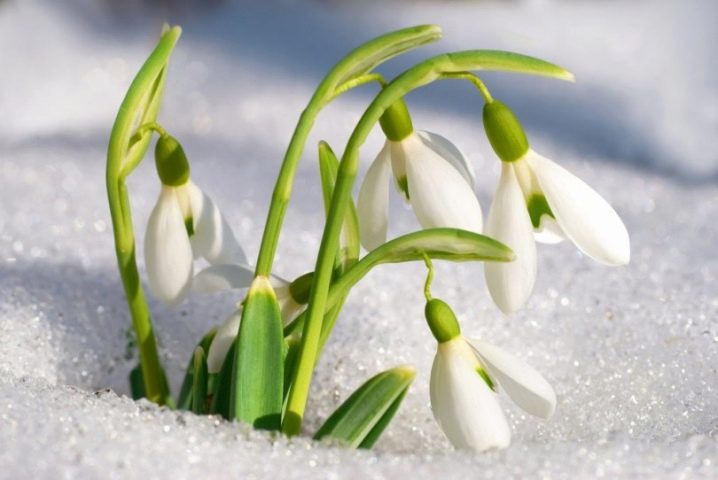
Description
The second name of the snowdrop is galanthus. The culture belongs to the amaryllis family. It is a perennial plant of small height - mainly 10-15 centimeters. The root system is bulbous, each year it grows new scales, allowing the plant to quickly propagate.
The foliage of the culture is dark green, there is not much of it, as a rule, it is only two leaves. They grow at the same moment as the peduncle. Leaf blades can be either glossy or matte, have a round or sharp tip, it all depends on the variety. The flower that appears on the arrow is the only one, most often white, has 6 petals. The flowers resemble bells in shape. They are distinguished by a drooping appearance.

Snowdrop blooms on average at the end of March, but in colder regions, the dates may shift. Flowering is extremely short, until the final snow melts. The cooler the weather at the start of flowering, the longer the crop will remain beautiful. After flowering, the snowdrops form seed pods, which then burst, spreading the seed around.
In the wild, delicate Galanthus grow in meadows, forest edges, forest glades, on the slopes of the mountains. They are widespread almost throughout Russia, in many European countries.
Unfortunately, the number of snowdrops is decreasing every year due to the sabotage of people who uproot flowers for sale. At the moment, Galanthus is an endangered species, it is listed in the Red Book. This is another reason why so many people are trying to grow it at home.

Popular species and varieties
Today, about 18 species of galanthus are known. These are the species that were saved. Many of them can be cultivated at home.
Alpine
This is one of the most common types. The length of the bulb is about 2.5-3.5 cm. The foliage is dark green, after flowering it increases in length. The stem grows up to 9 centimeters maximum, the flowers are neat, white, drooping. Flowering starts 4 years after planting. The distribution area of such a snowdrop is the Alps, as well as Switzerland and Western Transcaucasia.
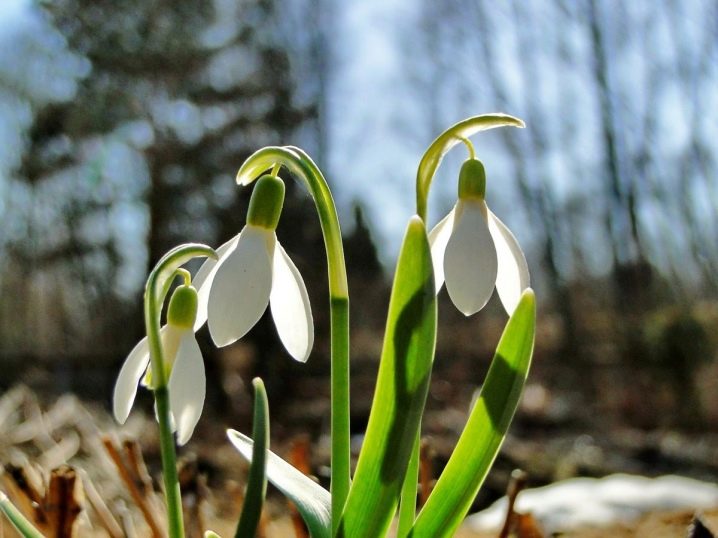
Caucasian
The foliage of the Caucasian Galanthus is flat, dark green, and has a linear configuration. The stem is about 10 centimeters long. Plants bloom in late March, bloom for about 2 weeks. The bell flowers are white with greenish blotches. The plant does not bring seeds every time. If you chose it, you will have to organize a shelter for the winter. The area of the widest distribution of culture is the central zone of the Transcaucasus.
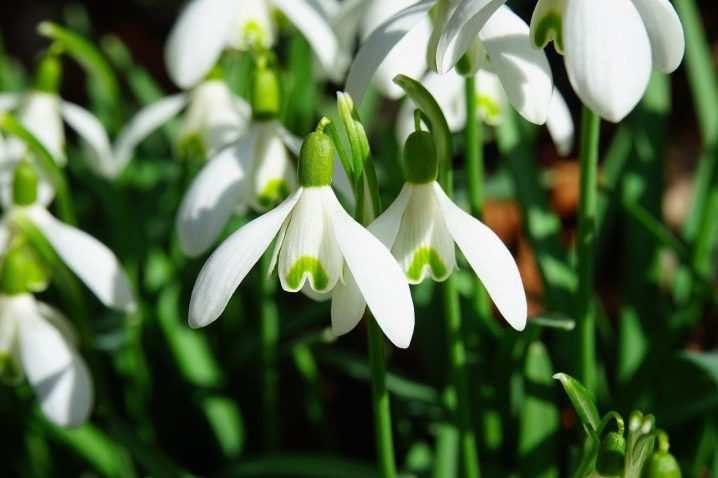
Bortkevich
This subspecies got its name in honor of one of the most famous dendrologists. The culture is growing in the North Caucasus. The leaves are lanceolate, green, but with a slight bluish tinge. Bortkevich's snowdrop flowers are very beautiful and sophisticated. They have concave petals and are white.Often, green specks are present on the petals.

Cilician
This species is widespread in the Transcaucasus, but it can still often be found near the Asian mountain slopes. Cilician Galanthus has a wedge-shaped bulb up to 2.3 cm long. Its foliage is dull, narrow, dark green. The peduncle is unusually long for snowdrops - up to 18 centimeters. Three petals are dissolved and look in different directions, and the white perianth is decorated with variegated green spots.
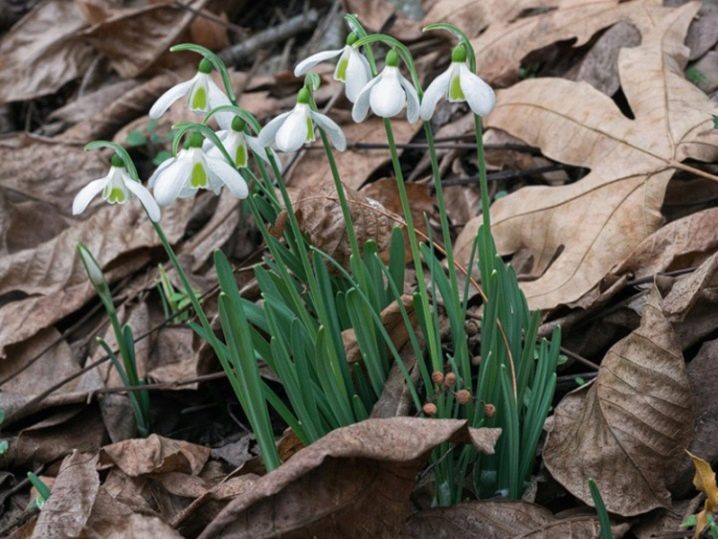
Elvis
The sophisticated Elvis snowdrop is found in Europe, Asia, Moldova and Ukraine. Very tall subspecies, up to 25 centimeters. Its foliage is unusually wide, green, with a blue tint. The flowers are very fragrant, they are large and resemble balls.
The subspecies has a rather long flowering period - about a month.
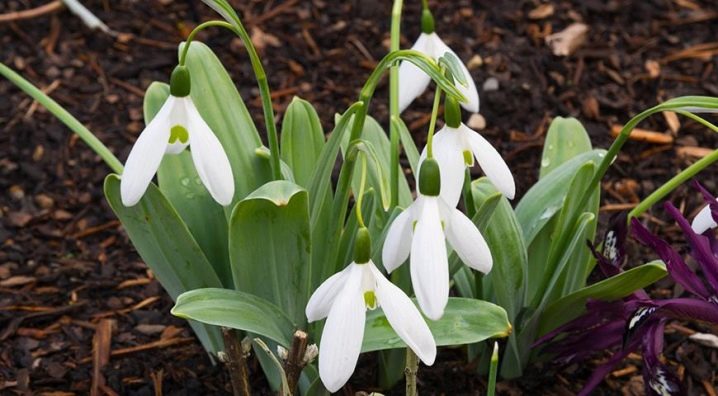
Folded
Gardeners are very fond of this variety of snowdrop for its high decorative effect. In the nature of Russia, it almost never occurs, seeds or bulbs must be purchased in Moldova, in Ukraine. And also there is the possibility of ordering flowers from Romania. The plant is quite tall, up to 24 centimeters, has large white flowers. Snowdrops quickly conquer the territory given to them, growing close to each other.
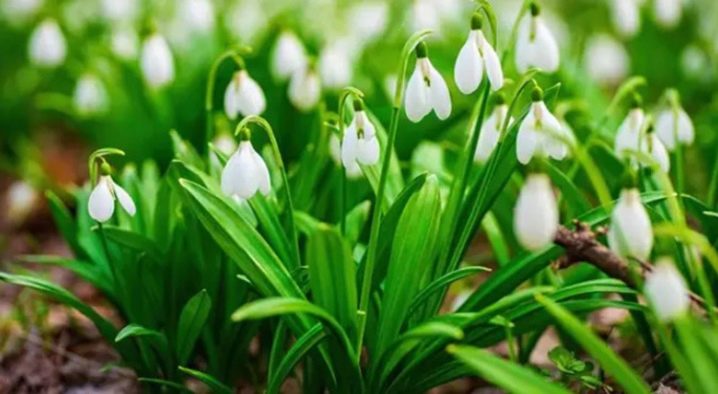
Broadleaf
In nature, such a subspecies can most often be found at the foot of the Alps. It is an incredibly hardy crop and can be grown in the coldest areas. The bulb of the plant is large in size, and the peduncle can grow up to 20 centimeters. The leaves have a color from dark olive to dark green, they shine beautifully. The flowers are white and large, with oval petals and a green spot inside.
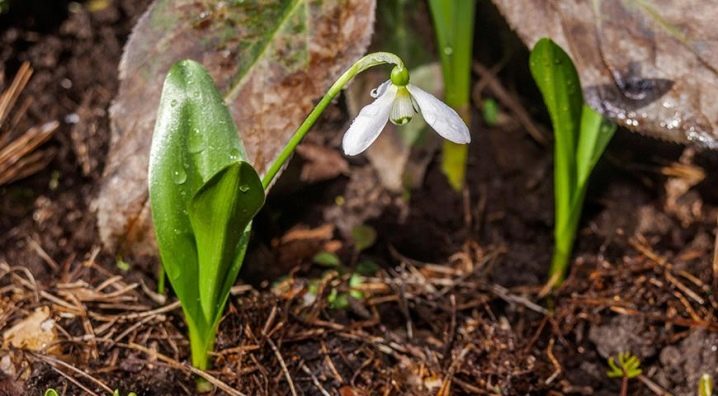
Ikarian
Such a snowdrop loves the stony grounds of the Greek islands. The maximum height of the peduncle is 22 centimeters, the foliage is wide, rich in emerald color. The flowers are snow-white, wide open, there is a characteristic spot on the inside. The beginning of flowering of the subspecies occurs in April. In Russia and the countries of the former USSR, the Ikarian galanthus is a rare guest.

Snow white
A very unpretentious variety, it grows very quickly, covering the beds with a decorative carpet. Very popular in the middle lane and other regions, often chosen by beginners. Peduncles are medium in size, about 12 centimeters, the leaves are narrow, lanceolate, bright. The flowers are white and drooping, large in size. Snowdrop blooms in early March, and ends blooming at the end of the same month.
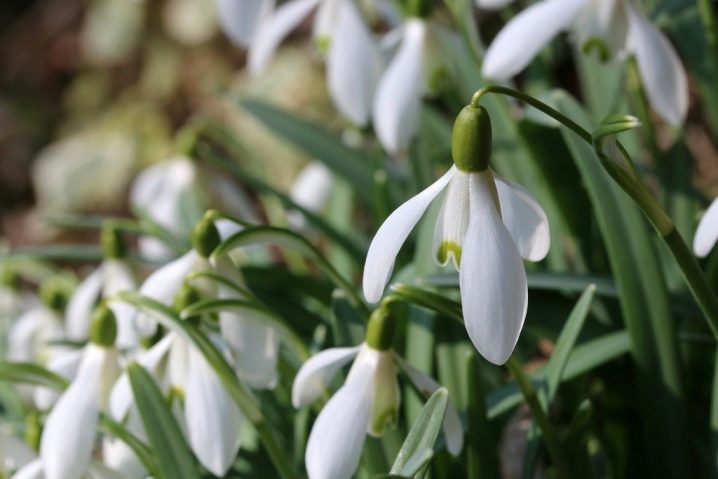
Voronova
It grows on the territory of the CIS countries, a fairly common species. In rare cases, the peduncle reaches 30 cm in height, but more often it is 15-20 cm. One white drooping flower with wide-open petals forms on it. The plant emits a delicate aroma. Such a snowdrop can bloom in February.
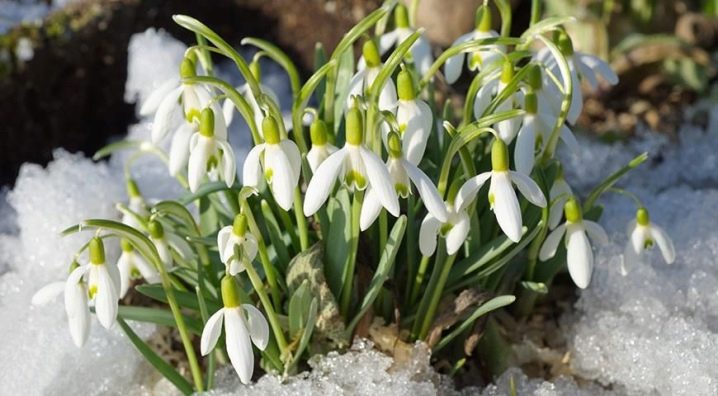
In addition to the species, it is worth paying attention to some interesting garden varieties of culture.
-
Flore pleno (unpretentious variety with double petals);
-
Anglesey abbey (one of the first to bloom, it can change color and size of flowers from season to season);
-
Cowhouse green (highly decorative variety with white goblet flowers);
-
Dionysus (the most delicate galanthus with double flowers with pronounced light green stains);
-
Ophelia (a white variety of snowdrops with especially large open flowers);
-
Richard Ayres (the variety has very beautiful flowers, because the green spots on them are very similar to an hourglass);
-
Spindelstone Surprise (one of the most unusual varieties with yellow petals).
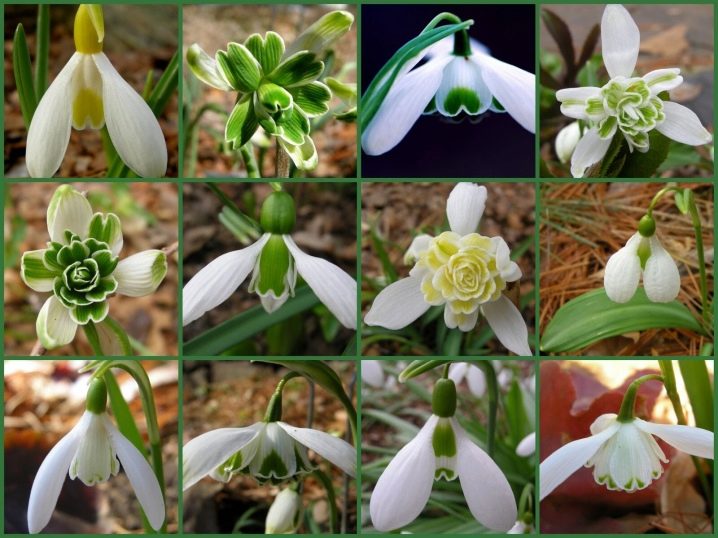
Landing
Whichever variety of Galanthus is chosen, the result will please the summer resident in any case. All species are actively growing, they can reproduce by self-seeding. Forms a beautiful carpet that needs almost no maintenance. If you follow all the planting rules, the plant will stay in one place for several years without getting sick or causing problems.
The material can be planted both in greenhouses and in open ground. You can start doing this in July, and it is recommended to finish it by the beginning of autumn.
However, if the autumn season is characterized by warm temperatures, then the planting of snowdrops can be carried out until November.
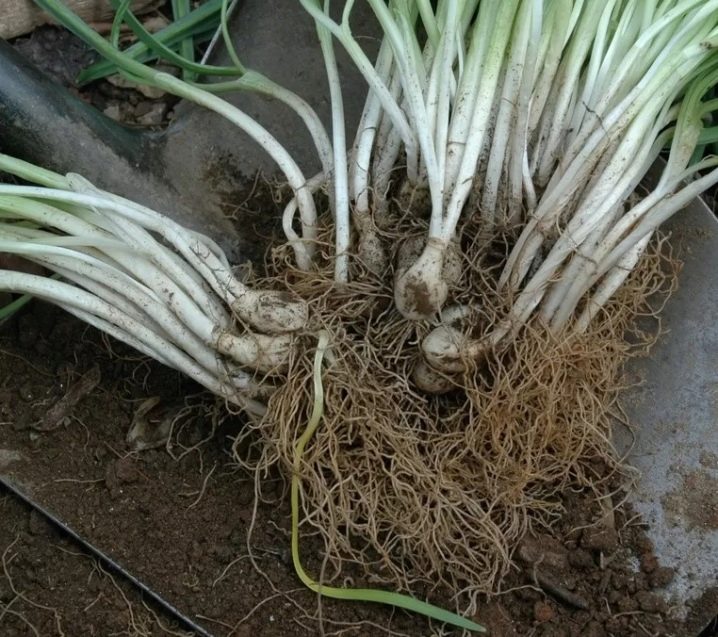
Only unopened flowers are suitable for planting. If the bud has already blossomed, the bulb will remain viable, but the next season the flowering will be sluggish or not at all. The bulbs must be strong, without deformation and rot. The soil for snowdrops plays a small role, but it is better not to plant on acidic and too heavy ones. It is recommended to fertilize poor soils with humus and mineral complexes.
It is not necessary to bury the bulbs too deep into the ground. 5-6 centimeters will be enough. Alternatively, you can measure the diameter, multiply by 3 and thus get the required depth. This method is more reliable. In any case, even if you make a mistake with the depth, there will be nothing terrible, the bulbs will adapt to this. After planting, the growing area is irrigated with water. The place chosen for snowdrops should be lit, but light partial shade will not become an obstacle.
Important: you need to plant bulbs only with gloves, since the material is extremely toxic.
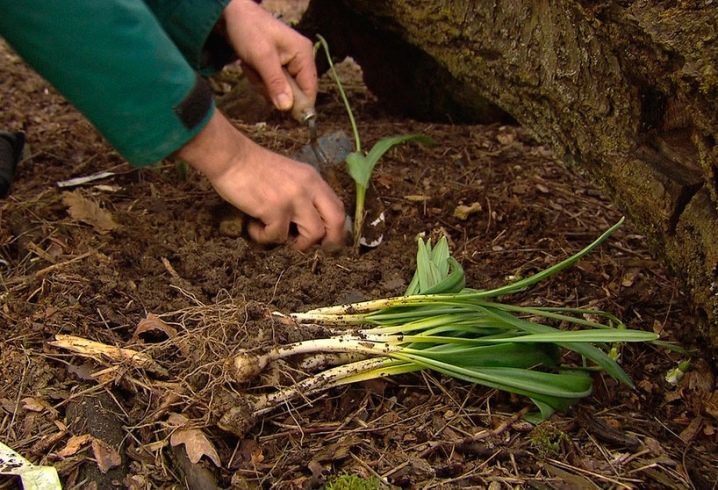
Care
Growing snowdrops in the open field in the country is a very pleasant business, since the plant requires almost nothing. Even a child can take care of them. If there was a lot of snow in the winter, you will not need to water the plantings, since the melting snow already provides enough moisture. Moderate watering as it dries is needed only if there was almost no snow in winter, and the spring turned out to be dry.
Weeding is also not needed, because snowdrops bloom long before weeds appear. But it is quite possible to feed them, but not organic. Organic complexes almost always contain nitrogen, which these plants do not need. It is better to choose a complete mineral complex for flowering crops. One feeding will be enough.

The transplant is carried out every 5 years. During this time, the mother's bulb is overgrown with many children. If the plant is not divided and transplanted, then it will suffer from nutritional deficiencies, which the children will begin to take over.
There are a couple more nuances. Snowdrop leaves should be cut off after flowering only when they turn yellow. If you do this earlier, the bulb will not receive the necessary strength, and the plant will not bloom later. In addition, during the period of snowless winters, the plantings should be covered with a light layer of peat mulch.
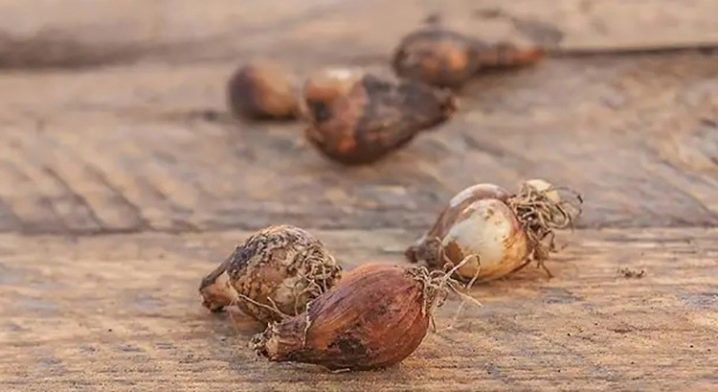
Reproduction
At home, snowdrop is propagated in two ways: seeds and bulbs. The first technique is longer in time, since such a snowdrop will bloom for 4 years. Yes, and there is no point in collecting seeds, Galanthus itself successfully reproduces with the help of the wind.
But dividing the bulbs is a much more productive option. It is worth separating the plants when transplanting, as mentioned above. For this, the summer period is quite suitable. The flower is dug up, the bulbs are separated, the earth is not removed from them. The material is treated with crushed activated carbon, and then planted on the prepared places. Plant immediately while the bulbs are still wet.
Important: if you planted the children in the fall, it will be necessary to cover the planting for the winter.
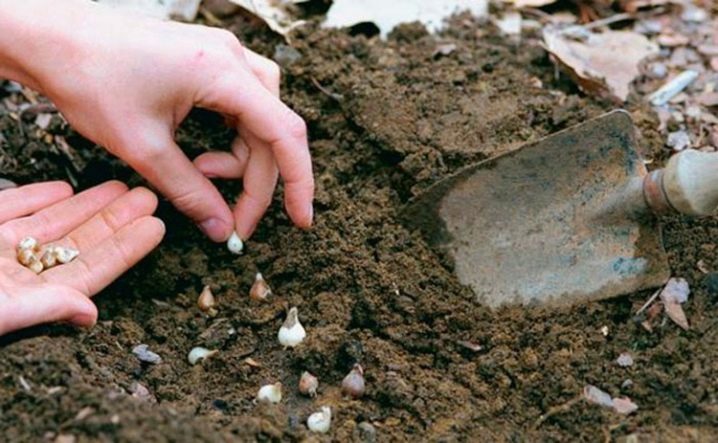
Diseases and pests
Even though snowdrops are extremely hardy flowers, they can still get sore. This, unfortunately, is not uncommon. Fungal ailments are most common, they appear after warm winters that have passed in conditions of high humidity. There are rust, gray rot. In order to prevent the development of ailments, all the affected parts of the flowers must be cut off and burned, and the remaining mass must be treated several times with good fungicides.
Viral diseases look much more dangerous. The appearance of viruses is evidenced by twisted foliage, in addition, the plants are covered with light stripes of a streak-like shape.There may also be deformation. Viruses are not cured, so diseased specimens are immediately dug up. The place of their growth is treated with a saturated solution of manganese.
Sometimes the leaves begin to lighten a lot. This is not dangerous. Blanching of the leaves is a sign of chlorosis, which means that the plant is receiving less nutrition. You just need to feed him.
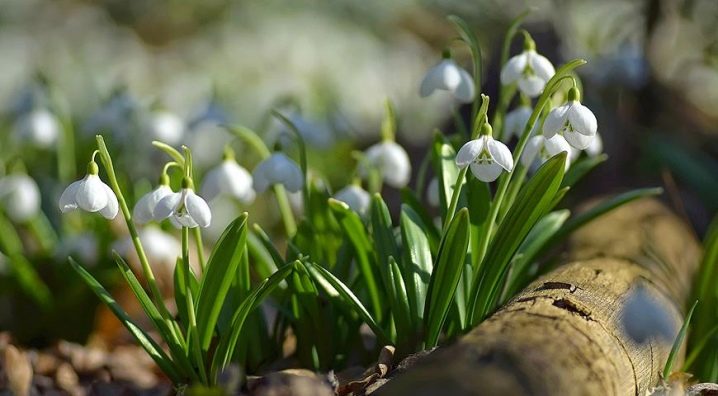
Of the parasites, gardeners especially note the scoop. Their caterpillars feed on leafy sap, which leads to wilting and weakening of the immune system. Flowers often infect onion nematodes. Infected plants should be immediately dug up and destroyed, and healthy ones should be immersed in water with a temperature of 40 degrees for 180 minutes. Further, the plantings are placed in a different place, and in the zone where the snowdrops grew earlier, they do not plant anything from the bulbous family for 5 years. Other insects, including the scoop, can be removed with insecticides. But it will be even easier to process the flower prophylactically at the very beginning of the summer of parasites.
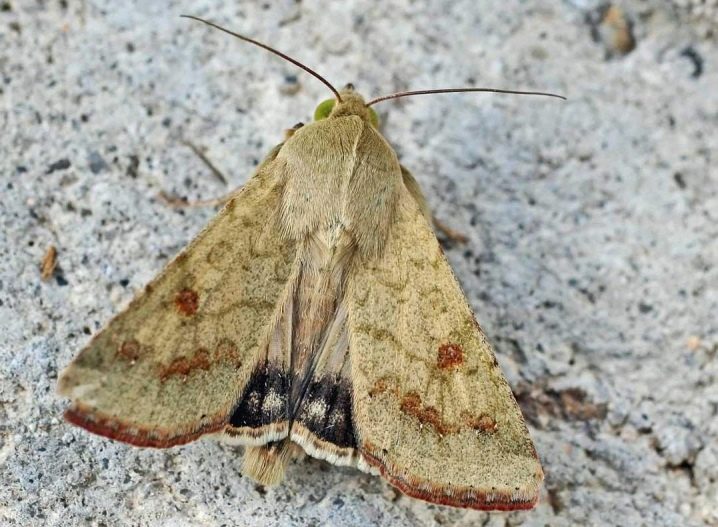







































































































The comment was sent successfully.